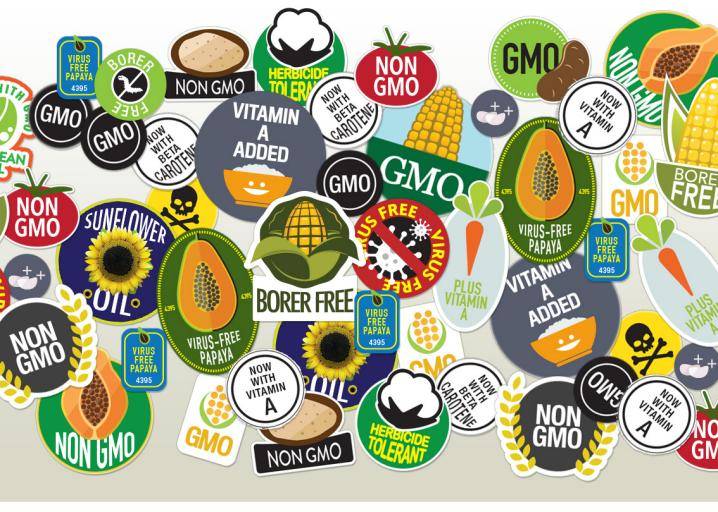Table of Contents
GENETIC ENGINEERING AND LAWS
INTRODUCTION
Genetic engineering involves isolating individual DNA fragments, coupling them with different genetic material, and thereby causing the genes to replicate themselves. Introducing this created advanced to a host cell causes it to multiply and produce clones that can later be harvested and used for a variety of purposes. Current applications of the technology include medical investigations of gene structure for the control of genetic disease, particularly through antenatal diagnosis. Bt cotton is the only Genetically Engineered (GE) plant approved for commercial cultivation in India.
Genetic engineering” implies that the technique by which heritable material, which does not usually occur or will not occur naturally in the organism or cell involved, generated outside the organism, or the cell is inserted into said cell or organism. It shall additionally mean the formation of new combinations of genetic material by incorporation of a cell into a host cell, where they occur naturally,self-cloning, further as the modification of an organism or in a cell by deletion and removal of components of the heritable material[1].
INTERNATIONAL CODES AND ETHICAL ISSUES FOR SOCIETY
An international code of ethics for genetic analysis was initially established within the World Medical Association’s Declaration of Helsinki in 1964. The guide prohibited outright most sorts of genetic engineering and was accepted by innumerable U.S. professional medical societies, as well as the American Medical Association (AMA). The growth of genetic engineering in the 1970s aroused international concern, however, only a few measures were taken by governments and medical societies to regulate it. Concern targeted the production of dangerous bacterial mutants that could be used as harmful life science tools or weapons. The Genetic Manipulation Advisory Group was established in England based on the recommendations of a prominent medical group, the Williams Committee.
India contains a systematic and structured regulative framework for biosafety analysis of genetically modified organisms (GMOs) and products thereof. India was one amongst the early movers in the development of a biosafety regulatory system for GMOs, way back in 1989. The apex rules for the regulation of all activities related to genetically modified organisms are notified under the Environment (Protection) Act, 1986. Additionally, there are other different acts, rules, and policies which are also applicable to these organisms.
REGULATIONS OF GMO’S IN INDIA
RULES, 1989
In India, Ministry of Environment, Forest and Climate Change (MoEFCC) introduced the Environment (Protection) Act, 1986 as umbrella legislation to provide a holistic framework for the protection and improvement of the environment. Thereafter, a series of Rules were notified to deal with varied issues such as hazardous chemicals, hazardous wastes, solid wastes, biomedical wastes, etc. Rules, 1989 are implemented by MoEFCC together with the Department of Biotechnology (DBT), Ministry of Science & Technology, and state governments.
In reference to the utilization of micro-organisms and application of gene technology, the MoEFCC notified the “Rules for manufacture, use/import/export & storage of hazardous microorganisms/genetically engineered organisms or cells, 1989” as per powers conferred by Sections “Regulation of Genome Engineering Technologies in India”, Section 8 and 25 of Environment (Protection) Act, 1986.
Six Competent Authorities and their composition have been notified under these Rules that include:
- rDNA Advisory Committee (RDAC)
- Institutional Bio-safety Committee (IBSC)
- Review Committee on Genetic Manipulation (RCGM)
- Genetic Engineering Appraisal Committee (GEAC)
- State Biotechnology Coordination Committee (SBCC)
- District Level Committee (DLC)
RELEVANT ACTS AND RULES REGULATING GMOs IN INDIA
- Rules for the Manufacture, Use, Import, Export, and Storage of Hazardous Micro-organisms/ Genetically Engineered Organisms or Cells, 1989 issued under EPA: Cover entire spectrum of activities involving GMOs and products thereof including the sale, storage, exportation, importation, production, manufacturing, packaging, etc. Foodstuffs have been moved out of the purview of Rules, 1989 recently.
- Plant Quarantine (Regulation For Import Into India) Order 2003: Covers regulation of import of germplasm / GMOs/transgenic plant material for research purpose.
- Biological Diversity Act, 2002– Regulates the use of biological resources including genes used for improving crops and livestock through genetic intervention.
- The Food Safety and Standards Act, 2006– Regulates manufacture, storage, distribution, sale, and import of food which includes GM food.
Recognizing the global advances within the arena of genome engineering technologies and huge potential for practical applications in healthcare and agriculture, initiatives have been taken in India by leading research institutions. In 2014, DBT has constituted a dedicated Task Force on “Genome Engineering Technologies and their Applications” with a vision to foster innovation and promote the development of Genome-wide Analysis and Engineering Technologies to make them accessible and affordable for wider use in life sciences. It is proposed to strengthen facilities on emerging technologies such as gene editing and support research projects.
Efforts are also underway to develop human resources to catch up with the expansion in this area and harness the advantages of these technologies for basic or applied use in a larger context and drive research for technology development towards basic and applied use.
CONCLUSION
As India is a signatory to Cartagena Protocol on Bio-safety, the definition of modern biotechnology as in the Protocol was proposed to be adopted in the Bill for setting up of Biotechnology Regulatory Authority of India in 2013. However, the bill lapsed and further action on the same is awaited.
In view of the present definition, it is expected that regulatory considerations for new and emerging technologies will be on a case by case basis based on the existing regulatory framework i.e. Rules, 1989 in the near future. Looking at today’s scenario where we have COVID-19 outbreak and the whole world is affected it is indeed necessary that rules for research on micro-organisms are set and they don’t become biological warfare and be harmful to the whole world.
[1] Rules of 1989
Author: Akanksha Anand,
Vivekananda Institute of Professional Studies, 4th year/ Student

